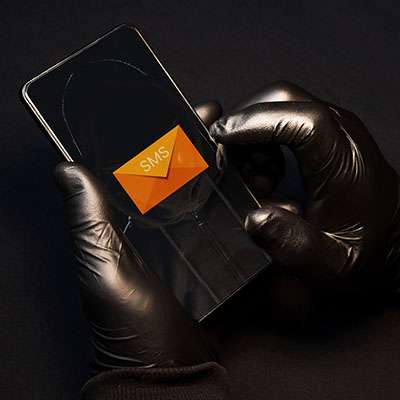Macro Systems Blog
Another Type of Phishing: Smishing
We talk about phishing often here, and one method that usually flies under the radar is smishing, or phishing that is conducted via SMS messages. Although email phishing is perhaps the most common method of conducting these scams, you should also be prepared to take on smishing, as it comes with its own share of unique challenges and dangers.
The Dangers of SMS Phishing, or “Smishing”
Ultimately, any plot carried out by a scammer that is trying to either pose as someone else or urge the user to do something especially dangerous could be considered a phishing attack. This kind of definition goes beyond simple email scams, where you get a message in your inbox urging you to click on links or download infected attachments. There are other forms of phishing, like smishing using SMS messages or even vishing, where voicemails are involved.
Let’s go over how a smishing attack might look and how it’s similar to other phishing attacks out there.
- An attacker communicates with someone within a business, gaining their trust or inspiring fear by posing as someone else.
- The attacker provides a link, allegedly solving the issue at hand, or requests that the target provide them with sensitive information
- The target obliges, giving the attacker exactly what they want, whether that’s sensitive information or access to it.
The biggest difference to keep in mind here is that smishing is sent through text messaging. Really, that’s it; it’s still a phishing attack, whether it’s sent through your email or text messaging app. The fact that it’s often unexpected, however, is what gets a lot of unsuspecting victims into trouble with these smishing attempts. While it is easy to put two and two together when you get an email phishing message, the same is not necessarily true for smishing.
Identifying a Text Phishing Message
Since smishing attacks are quite similar to phishing attacks, you can identify them in a lot of the same ways. That being said, the biggest challenge to identifying smishing attacks is remembering that they are a thing; make sure you keep this in mind, as well as the following throwaway signs of any type of phishing attack:
- Suspicious URLs: Any unsolicited message containing a URL is worth a healthy amount of skepticism before clicking on it. The same can be said for a text message. If you get a message that is unexpected, you have reason to be cautious about the URL.
- Grand promises or scare tactics: Smishing relies on the user clicking on links or sending information before they have time to think about whether they should do it. Any message with a sense of urgency, or those with large or unrealistic promises, should immediately be brought into question.
- Too much familiarity: Most businesses use an amiable tone with their text message communications, but they won’t try to be all buddy-buddy with you if that’s not part of your business model. Be wary of any messages that treat you in a way that is inconsistent with the way a company normally works with you.
Avoiding Smishing Attacks
You can avoid smishing attacks in much the same way you can avoid traditional phishing attempts. Don’t click on links or send information if you have any reason at all to believe that the sender is inauthentic. If you don’t recognize the number, don’t respond without doing a little investigating on your part to confirm its legitimacy.
If you want to protect your business from phishing attacks of all kinds, work with Macro Systems to provide your team with the training and technology to keep it safe. Learn more by calling us at 703-359-9211 today.





Comments